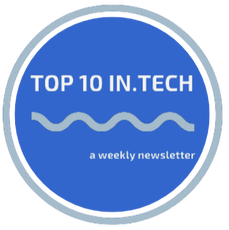|
1. SaaS METRIC OF THE WEEK: Product Market Fit Andrew Chen from a16z is excellent, and his PDF/deck on going from zero to Product Market Fit is awesome (For SaaS, he calls this a 5% conversion rate from free-to-paid, or 3X CPA to LTV ratio, or less than 2% monthly churn rate, or TL;DR.... just a clear path to $100k MRR). He also has an accompanying article with notes.
2. SALES OPS: For those lucky enough to be in Scale-Up mode. Scaling creates some real teething problems. Especially when it comes to revenue teams and moving beyond the founder being the primary (or only) salesperson. Eventually, a dedicated team will be needed (that doesn't involve the founder). In modern times, Sales Ops operators are required to help coordinate cross-departmental activities to help a revenue organization hum. Read this Sales Ops primer article from Point Nine Capital on how to get all this started. 3. ROADMAPS: The old-school way always seemed clunky to me, especially in today's Agile workplaces. But Agile teams absolutely need them as a reference point and sense of direction with what's to come beyond their more myopic Sprint cycles. Read here on the reasoning why along with 5 roadmap templates to use. I'm a fan of how Atlassian have designed their public accessible roadmap, and I have launched my own publicly accessible (Kanban-style) road map and even use it as part of the sales cycle - it works well! 4. BURNOUT: If one thing the past few years have taught us via the Great Resignation - it's that burnout is real! McKinsey explores burnout in the most Consulting way possible - are you asking the right question? 5. PLG STACKED: Adopting a PLG strategy requires unlocking a new tech set to traverse, so get your subscription wallets ready. Here is the mother load of tools you can use from the team at Product Led - Product-Led Growth Tech Stack: 199 SaaS tools for growth. There is an extensive list of tools in there I already use - and I ain't even close to being PLG. 6. EXPERIMENTS: In a very enjoyable mentoring session last week, we took a deep dive into experimentation - because every path you take towards growth and revenue should be a hypothesis in startup land - time to upskill your experiment skills by reading how to run a growth experiment (in 4 easy steps!). Testing versions of things is something to embed across your company and culture as you experiment towards growth - it's why failure is key to not failing. When conducting experiments such as A/B tests, get started with this refresher and Step-by-Step Guide. Go Practice has some great advice on making these experiments run faster. 7. UNDERSELL: If expansion fits into your growth strategy (it should) take a read of the two-part series from Tomasz Tunguz and Bill Binch - part one is deliberately underselling as a sales strategy to minimize churn and increase upsell/expansion opportunities as a land-and-expand strategy. Post 2 is an expansion of land and expand, which details how to structure a Startup sales team for optimal land-and-expand. 8. SDR RAMP: Kinda expanding on above. According to past studies, the time to ramp for an SDR average is about 3.2 months. From Saleshacker, here are some tips and tricks to make this ramp time as effective and successful as possible. 9. GROWTH: Holy smokes - check this play-by-play SaaS Growth Strategy post from Startup Business Tips - a free worksheet available for you here too. 10. CASE STUDY: Complimenting #6 above on experimenting. On the extreme end of A/B testing is booking.com which often runs over 1,000 tests simultaneously! But here is the payoff: That flywheel enabled Booking.com to compound at healthy growth rates while maintaining ~30% EBITDA margins and scaling Google ad spend to approximately $4 billion per year! POD OF THE WEEK: It's the TL;DR Video version of #7 above on how to structure a Startup sales team for optimal land-and-expand. Comments are closed.
|
|
